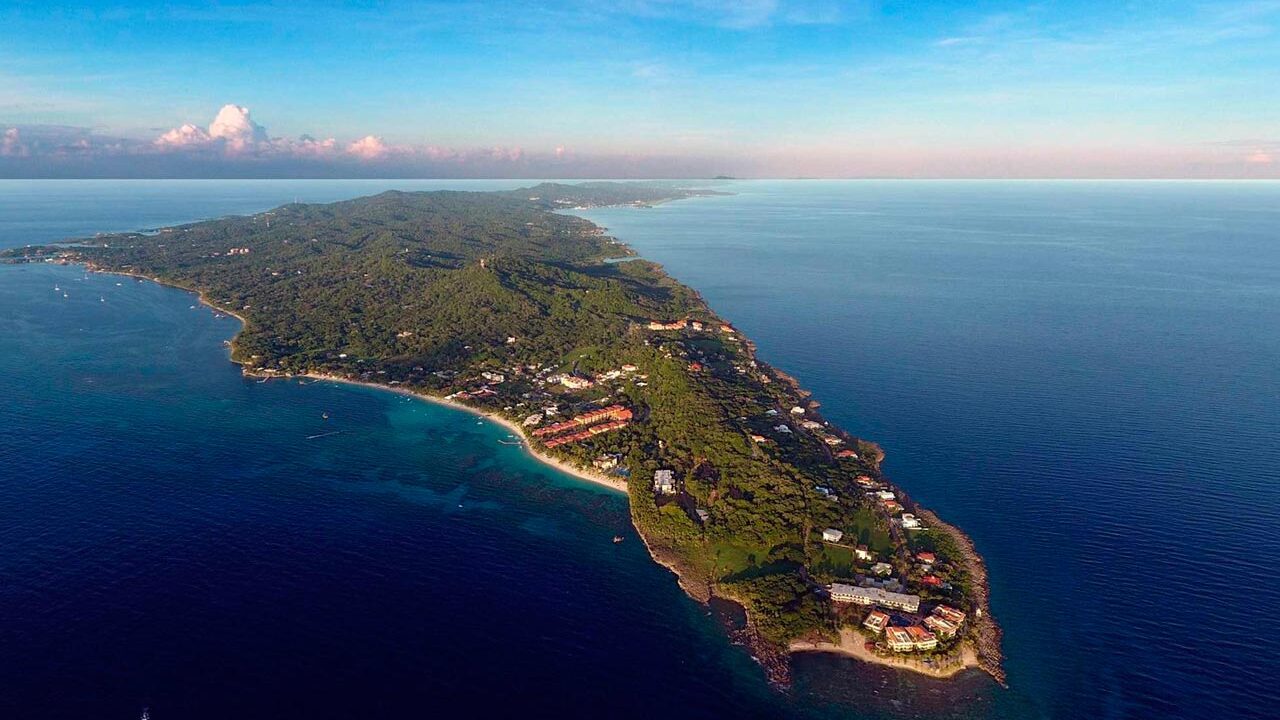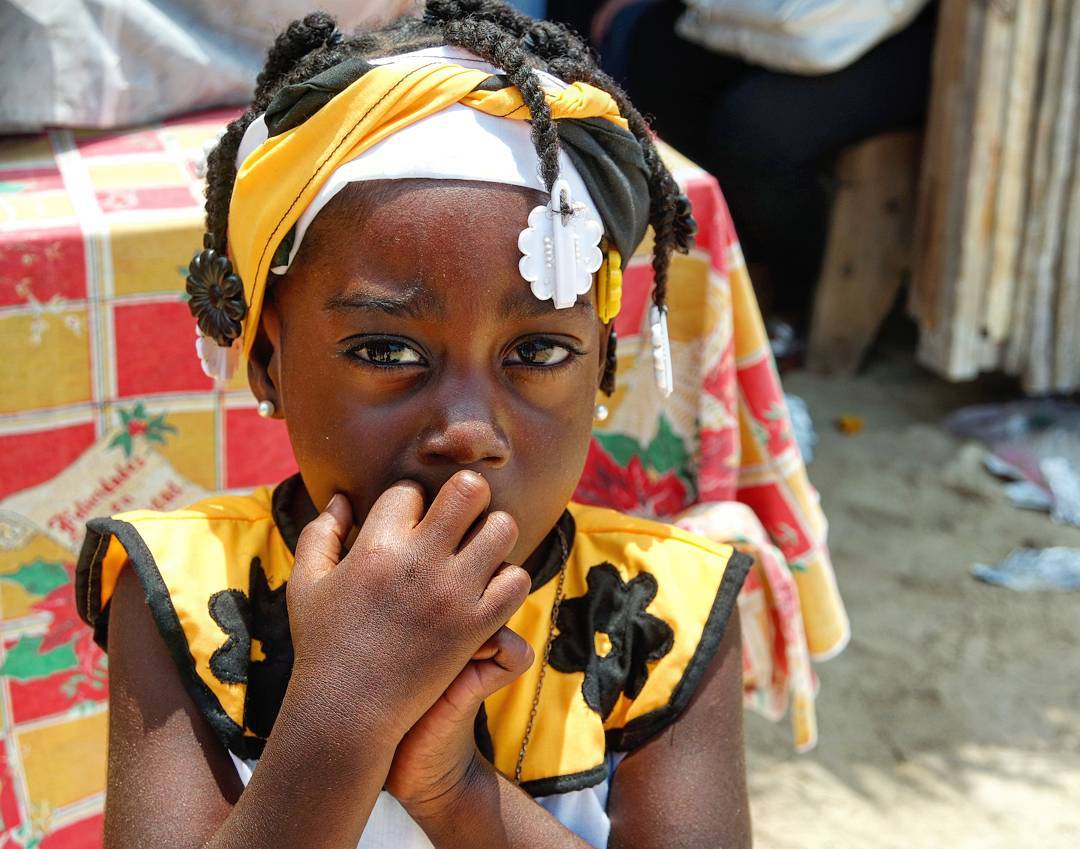ROATAN
WHERE WE ARE
Located in the Caribbean Sea, the island of Roatan is surrounded by crystal clear waters that are calm and warm. It is part of the Mesoamerican Barrier Reef, the second largest reef system in the world, where you can find walls that drop off to hundreds of meters only a few swim strokes away from white sandy beaches.HOW TO GET TO ROATAN
The island is served by the Juan Manuel Gálvez Roatán International Airport which has direct international flights from Miami, Dallas, Atlanta, and Houston (2 hours flight connection) via American Airlines, Delta Airlines, United Airlines and Avianca Airlines respectively, as well as domestic connections for international flights arriving into mainland Honduran cities including the capital Tegucigalpa, San Pedro Sula and San Salvador, El Salvador (30 minutes flight).Canadian carriers Sunwing Airlines (via Toronto) and WestJet also serve the Island with direct charter flights.
Air Europa offers flights from Madrid to San Pedro every Thursday which can connect the same day to Roatan.
Roatan is also serviced by the Galaxy Wave express Catamaran ferry with two daily trips to and from La Ceiba.
HISTORY
The pre-Columbian indigenous peoples of the Bay Islands are believed to have been related to Paya,Maya, Lenca or Jicaque, which were the cultures present on the mainland. Christopher Columbus on his fourth voyage (1502–1504) came to the islands as he visited the neighboring Bay Island of Guanaja. Soon after the Spanish began raiding the islands forslave labor. More devastating for Native American communities was exposure to Eurasian infectious diseases to which they had no immunity, such assmallpox and measles. No indigenous people survived the consequent epidemics. Throughout European colonial times, the Bay of Honduras attracted an array of individual settlers, pirates, traders and military forces, engaged in various economic activities and playing out political struggles between the European powers, chiefly Britain and Spain. Roatán and the other islands were used as frequent resting lonization of the Caribbean, the English occupied the Bay Islands on and off between 1550 and 1700. During this time, buccaneers found the vacated, mostly unprotected islands a haven for safe harbor and transport. English, French and Dutch pirates established settlements on the islands. They frequently raided Spanish cargo vessels carrying gold and other treasures from the New World to Spain. In 1797, the British defeated the Black Carib, who had been supported by the French, in a battle for control of the Windward Caribbean island of St. Vincent. Weary of their resistance to British plans for sugar plantations, the British rounded up the St. Vincent Black Carib and deported them to Roatán. The majority of Black Carib migrated to Trujillo on mainland Honduras, but a portion remained to found the community of Punta Gorda on the northern coast of Roatán. The Black Carib, whose ancestry includes Arawak and African Maroons, remained in Punta Gorda, becoming the Bay Island’s first permanent post-Columbian settlers.[citation needed] They also migrated from there to parts of the northern coast of Central America, becoming the foundation of the modern-day Garífuna culture. The majority permanent population of Roatán originated from the Cayman Islands near Jamaica. They arrived in the 1830s shortly after Britain’s abolition of slavery in 1838. The changes in labor force disrupted the economic structure of Caymanian culture. Caymanians were largely a seafaring culture and were familiar with the area from turtle fishing and other activities. Former Caymanian slaveholders were among the first to settle in the seaside locations throughout primarily western Roatán. Former slaves also migrated from the Cayman Islands, in larger number than planters, during the late 1830s and 1840s. Altogether, the former Caymanians became the largest cultural group on the island. For a brief period in the 1850s, Britain declared the Bay Islands its colony. Within a decade the Crown ceded the territory formally back to Honduras. British colonists were sent though, and asked William Walker, a freebooter with a private army, to help end the crisis in 1860 by invading Honduras; he was captured upon landing in Trujillo and executed there. In the latter half of the 19th century, the island populations grew steadily and established new settlements all over Roatán and the other islands. Settlers came from all over the world and played a part in shaping the cultural face of the island. Islanders started a fruit trade industry which became profitable. By the 1870s it was purchased by American interests, most notably the New Orleans and Bay Islands Fruit Company. Later companies, the Standard Fruit and United Fruit Companies became the foundation for modern-day fruit companies, the industry which gave Honduras the sobriquet “banana republic”. The 20th century saw continued population growth resulting in increasing economic changes, and environmental challenges. A population boom began with an influx of Spanish-speaking Mestizo migrants from the Honduran mainland. In the last decades they tripled the original resident population. Mestizo migrants settled primarily in the urban areas of Coxen Hole and Barrio Los Fuertes (near French Harbour). But in terms of population and economic influence, the mainlander influx was dwarfed by the overwhelming tourist presence in most recent years. Numerous American, Canadian, British, New Zealand, Australian and South African settlers and entrepreneurs engaged chiefly in the fishing industry, and later, provided the foundation for attracting the tourist trade. In 1998, Roatán suffered some damage from Hurricane Mitch, temporarily paralyzing most commercial activity. The storm also broke the popular dive-wrecks “Aguila” and “Odyssey” into several pieces.DEMOGRAPHICS
The Caracol people are an English-speaking people who have been established in Northern Honduras (specifically, the Bay Islands) since the early 19th century. They are chiefly of European and British-Afro-Caribbean descent. Caracol is Spanish for “conch, snail or shell”, and relates the people of the Bay Islands to their unique environment and their seafaring culture. In its current usage, the termcaracol refers to all people born in the Bay Islands region, and their descendants. The term “caracol” has also been deemed offensive by native Islanders and the term is only used by Spanish-speaking “mainland” Hondurans who have a long standing rivalry with native Bay Islanders because of their differences in culture, language, beliefs and ideals. All native islanders regardless of race, creed or color prefer the term “Islanders” when being referred to. The region of the Bay Islands encompasses the three major islands of Roatán, Útila and Guanaja, the Hog Islands as well as the smaller islands or cays. These people are also called “Islanders,” especially locally.
English is the first language of all native islanders regardless of race and Spanish is spoken second, whereas mainland Honduras is primarily Spanish speaking. It remains this way because of the islands’ past as a British colony with descendants of the British Isles. With the steady influx of mainland Hondurans migrating to the islands, an increase in Spanish has arisen. Because of the tourism and cruise ship industry that supports the islands, English continues to be the first spoken and dominant language among all native island peoples. Over time, the form of English spoken by the Caracol has changed. The language differs mostly in morphology but also in pronunciation and accent and, to a lesser extent, in syntax and vocabulary, from the English of the other British Caribbean colonies, as evidenced by the usage of a wide variety of old standard English terms and words throughout the islands. They are similar enough to be mutually intelligible and understood throughout the entire Bay Islands. The language can also be learned, although it is not taught in the general sense, whilst the accent derives from the wide variety of expatriates living and working on the Islands from North America and Europe.
ROATAN MARINE PARK
The Roatán Marine Park (RMP) is a grassroots, community-based, non-profit organization located on Roatan. The organization was formed in January 2005 when a group of concerned dive operators and local businesses united in an effort to protect Roatan’s fragile coral reefs. Initially, the RMP’s goal was to run a patrol program within the Sandy Bay-West End Marine Reserve (SBWEMR), to prevent over exploitation through unsustainable fishing practices. Over time, the organization expanded the scope of their environmental efforts through the addition of other programs to protect Roatan’s natural resources, including patrols and infrastructure, education, conservation and public awareness.HERE ARE SOME OF THE HIGHLIGHTS OF INTERNATIONAL PRESS THE BAY ISLANDS HAS RECEIVED
- West Bay Beach in Roatan was named the #9 best beach in the entire world in the 2016 TripAdvisor Travelers’ Choice Awards. That made West Bay Beach the top beach in all of Central America!
- U.S. News and World Report called Roatan a “Beautiful and Affordable Caribbean Isle.”
- The LA Times highlighted Roatan in its article: “The beach life is the best life on Roatan Island in Honduras”
- ABC News included the Bay Islands in its article “5 Caribbean Destinations You Never Think of Visiting.”
- CNBC shared an article from International Living magazine written by Roatan resident (and Bay Islands Tourism Bureau airport volunteer) Deb Crofutt: “How You Can Retire in the Caribbean for $1,000 a Month.”
- Islands Magazine named Roatan as one of its “Top 20 Best Islands to Live On.”
- The Huffington Post highlighted Utila as an ideal spot for swimming with whale sharks in “Impressive Sightings in the Caribbean.”
- International Living offered “5 Reasons to Move to the Tropical Island of Roatan.”
- The Telegraph UK highlighted the “unspoilt appeal” of Roatan (and included photos) as one of their “10 Amazing Cruises for Solo Travellers.”
- The Irish Examiner included Roatan as one of its “Very Best Places to Stop on a Caribbean Cruise.”
- Roatan was named one of the top 10 Caribbean Cruise Ports in the 4th Annual Cruise Fever Fan Awards.
- The Houston Chronicle included Roatan in its list of “Exotic Vacation Spots Most of Us Can Only Dream of Visiting.”
OTHER INFORMATION
- Electronic adaptors: 110 volts is the standard, which is the same as the United States and Canada.
- Visa requirements & passports: All foreign visitors must bring a valid passport upon their arrival to enter Honduras. Visitors are issued a Honduran visa stamped in the passport at the moment of their arrival, and it is expected for visitors to have at least three months left on their passport before expiration, to be able to enter Honduras.
- Spoken languages: English is the main spoken language, as well as Spanish and Garifuna.
- Currency: $1.00 (One US Dollar) = L. 23.52 (twenty three Lempiras with fifty two cents) US Dollar are accepted in most of the local businesses and is the easiest currency to change to lempiras. There are ATMs in West End, West Bay and Coxen Hole.
- Vaccines: for some countries yellow fever vaccine is required.
- There are pharmacies in West End and Coxen Hole.
- There are small supermarkets in West End and other larger ones in Coxen Hole.
- There are gyms in West Bay and West End.
- Spearfishing is not allowed in the Roatán Marine Park; with the exception of the Lionfish, for which it is necessary to obtain the respective license in the Roatán Marine Park office
- Taxi Airport - West End US $ 20
- Taxi Airport - West Bay US $ 30
- "Taxi colectivo" West End - Coxen Hole US $ 2
- Taxi boat West End - West Bay US $ 3 (running until dark)


